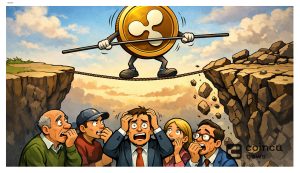Slippage is a common occurrence in the cryptocurrency market that can greatly impact traders’ buying and selling experiences. When placing orders to buy or sell cryptocurrencies, traders often expect their transactions to be executed at a specific price. However, due to price fluctuations and market dynamics, the actual execution price may differ from the expected price, resulting in slippage.
Slippage can happen in various financial markets, including stocks and forex. However, it is particularly prevalent and pronounced in the crypto market, primarily on decentralized exchanges like Uniswap. This is due to the high levels of volatility in cryptocurrency prices, as well as factors such as low volume and liquidity for certain altcoins.
There are two types of slippage: positive and negative. Positive slippage occurs when the executed price is better than the expected price for a buy order, providing traders with a more advantageous rate than they initially anticipated. Conversely, negative slippage occurs when the executed price is worse than the expected price for a buy order, resulting in a less favorable rate. The same principles apply to sell orders as well.
To better understand slippage, let’s consider an example:
Imagine you want to buy 10 Bitcoin at a specific price of $50,000 each. You place a market order on a cryptocurrency exchange, expecting your order to be filled at or close to that price. However, due to sudden market movements or insufficient liquidity, your order is executed at a higher price of $50,100 per Bitcoin. In this scenario, you experienced negative slippage because the actual execution price was worse than your expected price.
The financial impact of slippage can be significant, especially for frequent traders or those executing large orders. If slippage consistently occurs in the wrong direction, it can result in substantial losses over time. Therefore, it is crucial for traders to understand slippage and take appropriate measures to minimize its effects.
One way to mitigate slippage is by utilizing limit orders instead of market orders. A limit order allows traders to specify the desired price range at which they are willing to execute their trades. By setting a limit order, traders have more control over the price at which their orders are filled. For example, if you want to buy 10 Bitcoin at a maximum price of $50,000 each, you can place a limit order with the specified price. This way, your order will only be executed if the price is $50,000 or lower, potentially reducing the risk of slippage.
However, it is important to note that setting the slippage tolerance too low might hinder the execution of transactions, especially during significant price movements. If the market quickly moves away from the specified price range, the order may not be executed at all. This is a trade-off between reducing slippage and ensuring timely execution.
On the other hand, setting the slippage tolerance too high can make traders susceptible to frontrunning. Frontrunning refers to the unethical practice of executing trades ahead of other traders to take advantage of their orders. By setting a high slippage tolerance, traders may inadvertently provide an opportunity for frontrunners to manipulate the market and execute their own trades at more favorable prices.
For inexperienced traders, slippage can pose a significant challenge. It emphasizes the importance of understanding the volatility of both the cryptocurrency being traded and the specific trading platform being used. Different cryptocurrencies and exchanges may have different levels of liquidity and price volatility, which can influence the extent of slippage experienced.
Traders should conduct thorough research and gain experience in analyzing market conditions before executing trades. This includes understanding the trading volume, liquidity, and historical price movements of the cryptocurrencies they wish to trade. By being well-informed, traders can make more educated decisions and potentially reduce the impact of slippage on their trades.
In conclusion, slippage is a common phenomenon in the cryptocurrency market, particularly on decentralized exchanges. It occurs when the executed price of a buy or sell order differs from the expected price, leading to either positive or negative slippage. Traders can minimize slippage by utilizing limit orders and setting appropriate slippage tolerances, although this must be balanced with the need for timely execution and protection against frontrunners. Understanding the volatility of the cryptocurrency and trading platform being used is crucial in mitigating slippage’s impact. By being aware of slippage and implementing appropriate strategies, traders can navigate the challenges of the cryptocurrency market more effectively.














